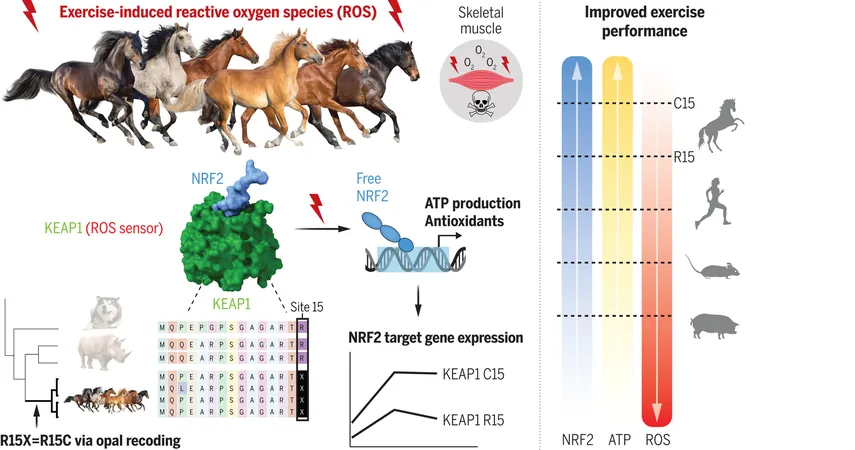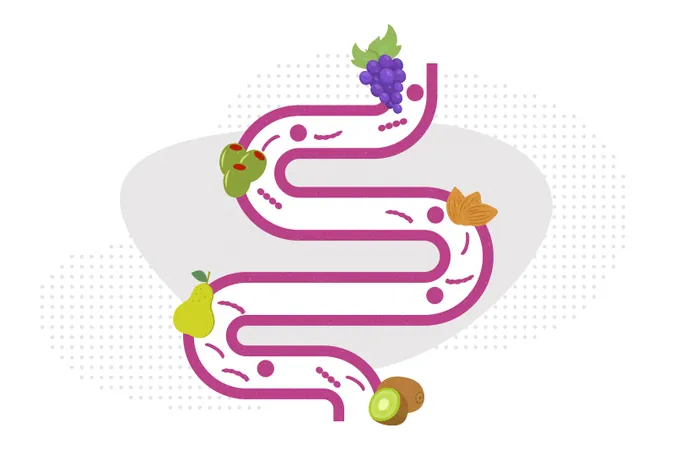
Revolutionary Genetic Mutation in Equines Unlocks New Athletic Potential
2025-03-31
Author: Siti
Introduction
A groundbreaking study conducted by researchers at Johns Hopkins University and Vanderbilt University reveals that horses, donkeys, and zebras have a unique genetic adaptation that defies conventional genomic rules. Surprisingly, a genetic mutation that usually leads to the cessation of protein production has instead turned into a strength for these remarkable animals, enhancing their capacity for oxygen metabolism and energy production.
Published Research Findings
Published in the esteemed journal Science, this research sheds light on the genetic basis behind the exceptional athleticism of equines, hinting at an innovative approach to understanding stop codons in genetic sequences. Horses, in particular, display unparalleled aerobic performance, with thoroughbreds consuming oxygen at rates that can exceed 360 liters per minute—more than double that of elite human athletes.
Previous Research Limitations
Past research predominantly focused on the physical characteristics of these animals, such as size and muscle structure, without establishing a solid link to their incredible aerobic capabilities. It was well-known that genes associated with muscle development exist, but the specifics of how these genes influenced oxygen utilization and overall energy output remained elusive.
Focus on the KEAP1 Gene
In this particular study, scientists zeroed in on the KEAP1 gene and its associated KEAP1-NRF2 pathway, which play crucial roles in regulating antioxidant responses and coordinating cellular energy production. In birds, this pathway evolved to combat oxidative stress associated with flight, while early vertebrates adapted it for surviving the transition from aquatic to terrestrial life. The researchers suggest that a similar evolutionary mechanism might have propelled the remarkable athletic development seen in equines.
Discovery of the Stop Codon
Upon examining the KEAP1 gene, the researchers stumbled upon a premature stop codon that was unusually situated early in the protein's coding sequence. This stop codon was expected to terminate transcription prematurely, resulting in a truncated and nonfunctional protein. Instead, the team found that in horse cells, this early stop codon was ingeniously 'recoded' to produce a functional protein, showcasing a rare genetic phenomenon that had not been documented before in any vertebrates for such a gene.
Research Methods
Advanced molecular biology techniques, including CRISPR-Cas9 gene editing and mass spectrometry, were utilized to validate their findings. The results revealed that this unusual genetic recoding involved the translation of the premature stop codon as cysteine, allowing the production of a full-length protein critical for energy regulation.
Evolutionary Mechanisms
The study elucidates the evolutionary mechanisms behind this adaptation, highlighting how specific structural features of the KEAP1 mRNA and unique mutations in translation machinery proteins (SBP2 and eEFSec) enable this genetic anomaly to function successfully. These adaptations may have led to a significant increase in aerobic performance, catalyzing the development of speed and endurance traits in equines.
Implications for Human Medicine
This research not only enhances our understanding of equine biology but also opens the door to new therapeutic strategies in human medicine. With approximately one in ten human genetic disorders linked to premature stop codons, the natural ability of horses to utilize stop codon recoding effectively may inspire innovative approaches aimed at restoring functional protein synthesis in affected individuals.
Conclusion
As science continues to unveil the extraordinary genetic potential within the animal kingdom, equines may well serve as a model for future biomedical advancements, unraveling the complexities of genetic regulation and its implications for health and performance.



 Brasil (PT)
Brasil (PT)
 Canada (EN)
Canada (EN)
 Chile (ES)
Chile (ES)
 Česko (CS)
Česko (CS)
 대한민국 (KO)
대한민국 (KO)
 España (ES)
España (ES)
 France (FR)
France (FR)
 Hong Kong (EN)
Hong Kong (EN)
 Italia (IT)
Italia (IT)
 日本 (JA)
日本 (JA)
 Magyarország (HU)
Magyarország (HU)
 Norge (NO)
Norge (NO)
 Polska (PL)
Polska (PL)
 Schweiz (DE)
Schweiz (DE)
 Singapore (EN)
Singapore (EN)
 Sverige (SV)
Sverige (SV)
 Suomi (FI)
Suomi (FI)
 Türkiye (TR)
Türkiye (TR)
 الإمارات العربية المتحدة (AR)
الإمارات العربية المتحدة (AR)